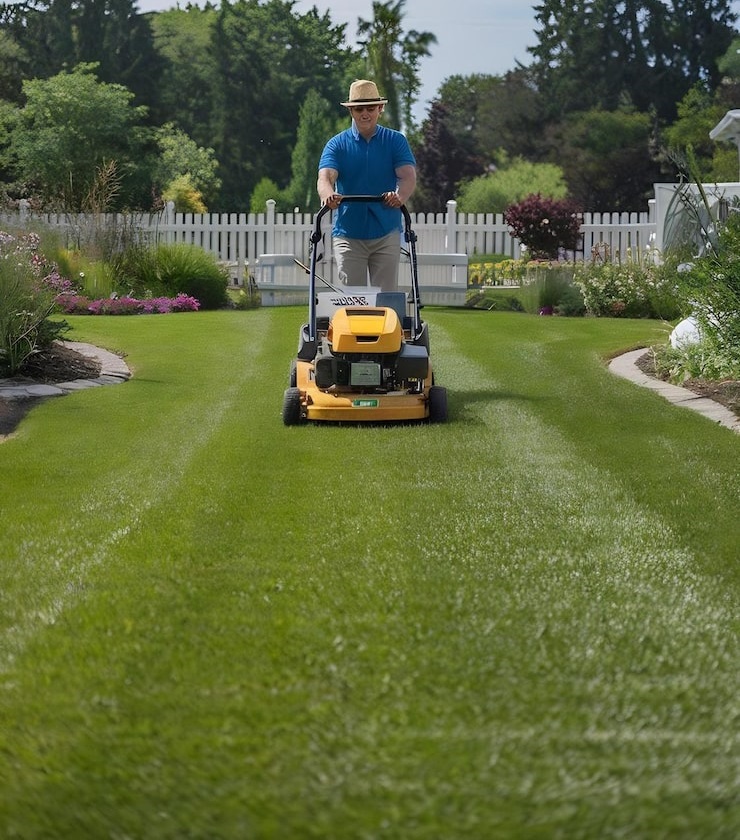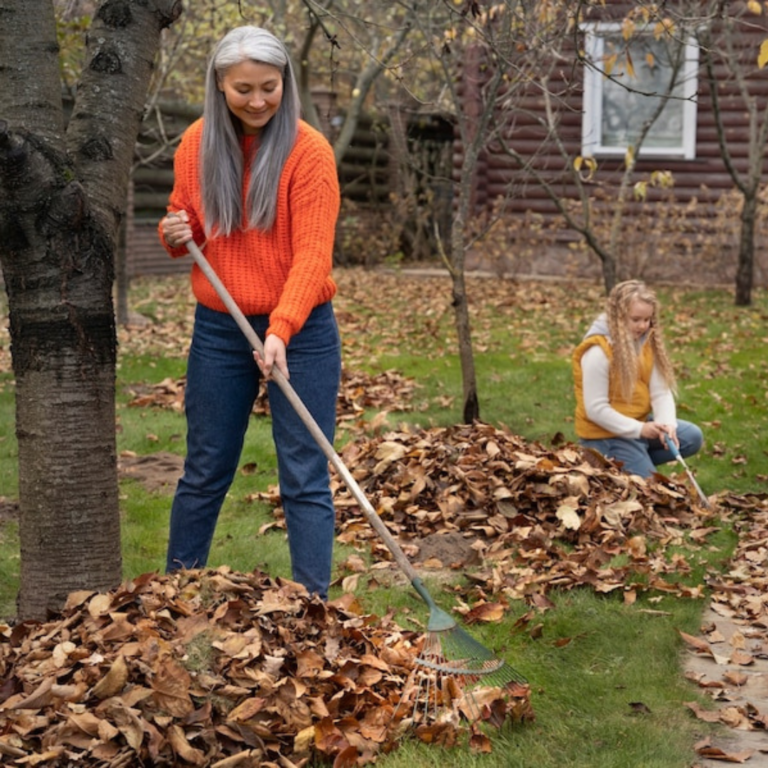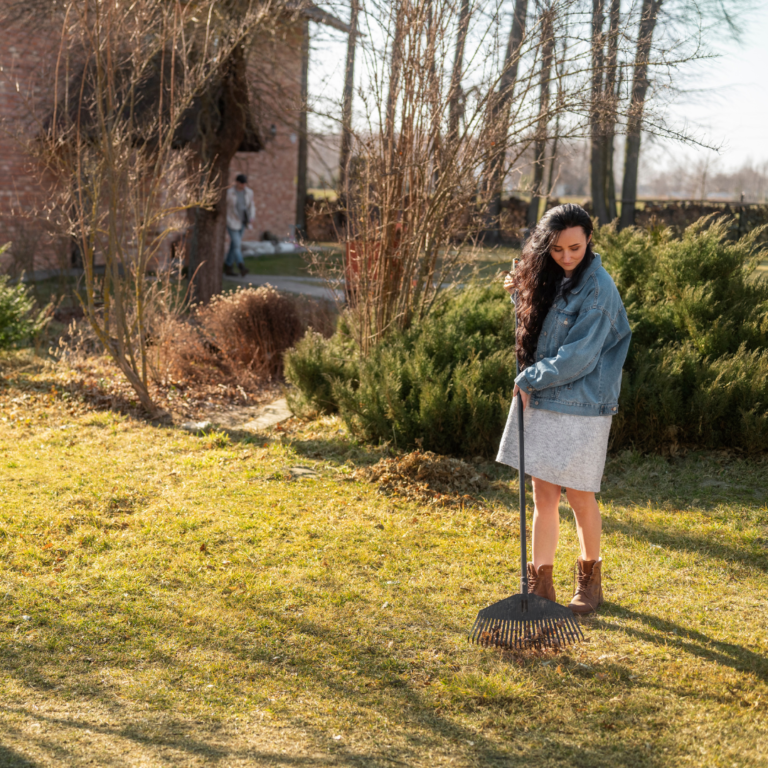Preparing your lawn for winter is crucial to protect your grass from the cold and ensure it comes back strong in spring. Winter conditions like snow, frost, and soil compaction can damage grass, reduce access to nutrients, and weaken the lawn overall. Taking proactive steps in the fall can give your lawn the best chance to survive harsh winter conditions and emerge healthy and lush in spring.
Here’s a comprehensive guide on how to get your lawn ready for winter.
Cleaning up
Start by clearing your lawn of leaves, branches, and other debris. Fallen leaves and clutter can harbor diseases and pests, and leaving them on the lawn can cause mold and fungal growth. A clean lawn ensures your grass gets enough sunlight and air before winter sets in.
Clearing weeds
Weeds can multiply during winter or regrow in spring, so it’s important to control them before the first frost. You can use herbicides or manually remove weeds. Professional lawn care services, like Lawn Pro of the Carolinas, can recommend the best solutions for your specific lawn type and condition.
Mowing
Adjust your mowing routine to prepare the grass for winter:
- Last Few Mows: Raise the mowing height by half to one inch. This helps grass store nutrients and capture more sunlight.
- Final Mow: Before the first snow or frost, lower the mower slightly to prevent snow mold and promote deeper root growth.
- Always use sharp blades to avoid stressing the grass.
Aerating the Soil
Soil compaction can limit air, water, and nutrient access to roots. Aerating the lawn before winter allows the grass roots to breathe and improves nutrient absorption. A power aerator works best, and if you don’t have one, some garden centers offer rentals. Aeration also helps reduce stress from winter frost and promotes healthier spring growth.
Top-Dressing with Compost
Spreading a thin layer of aged compost (about half an inch) over the lawn improves soil structure and adds essential nutrients. Work the compost into sparse areas with a leaf rake. Make sure the compost is dry, crumbly, and fully cured to avoid burning the grass.
Fertilizing
Applying fertilizer before winter helps grass store nutrients for the colder months. A high-phosphorus fertilizer encourages root growth and strengthens the lawn. If a soil test shows low pH, adding pelletized lime can also improve nutrient uptake. Always follow manufacturer recommendations to avoid overfertilizing, which can harm your lawn.
Overseeding
Overseeding helps fill in bare spots and promotes a denser, more resilient lawn. Apply seed 2-3 weeks before the first expected frost. Use a spreader to distribute seeds evenly, and keep it in motion while opening or closing the hopper. For large lawns, power overseeders can save time and reduce manual effort. After seeding, lightly rake and water the area to encourage germination.
Dethatching
A thick layer of dead grass, roots, and organic matter can prevent nutrients, water, and air from reaching the soil. Dethatching a few weeks before frost removes this barrier and prepares the lawn for winter. This step also helps prevent mold growth under snow cover.
Raking and Watering
After overseeding and dethatching, lightly water your lawn to settle the seeds and encourage sprouting. Watering 2-3 times a day for short periods is sufficient until seeds start to germinate. Once the new grass grows, you can reduce watering and mow as needed.

Common Mistakes to Avoid
When preparing your lawn for winter, keep these points in mind:
- Overwatering: Too much water can cause fungal diseases and root rot.
- Overfertilizing: Excess fertilizer may burn roots and damage soil health.
- Skipping Aeration: Compacted soil hinders nutrient absorption and weakens grass.
- Wrong Grass Seed: Use seeds suited to your climate and existing lawn type.
- Ignoring Soil pH: Unbalanced pH can limit nutrient uptake.
When to Start Winter Lawn Prep
Early to mid-fall is the ideal time to begin winter preparation. This gives new grass time to establish itself and strengthens existing grass before frost. In most regions, completing the process by late September or early October works best.
Professional Lawn Care Services
Preparing a lawn for winter can be time-consuming and physically demanding, especially if you lack the necessary tools. Hiring professional services like Lawn Pro of the Carolinas can simplify the process. They provide personalized solutions based on grass type, climate, and lawn condition to ensure the best results.
Conclusion
Proper winter prep not only protects your lawn from cold weather, snow, and frost but also ensures it recovers quickly from summer stress. By following these steps – cleaning, mowing, aerating, overseeding, fertilizing, dethatching, and watering, you can enjoy a healthier, thicker, and greener lawn in spring.
Taking a proactive approach in fall gives your lawn the best chance to thrive all year round.







